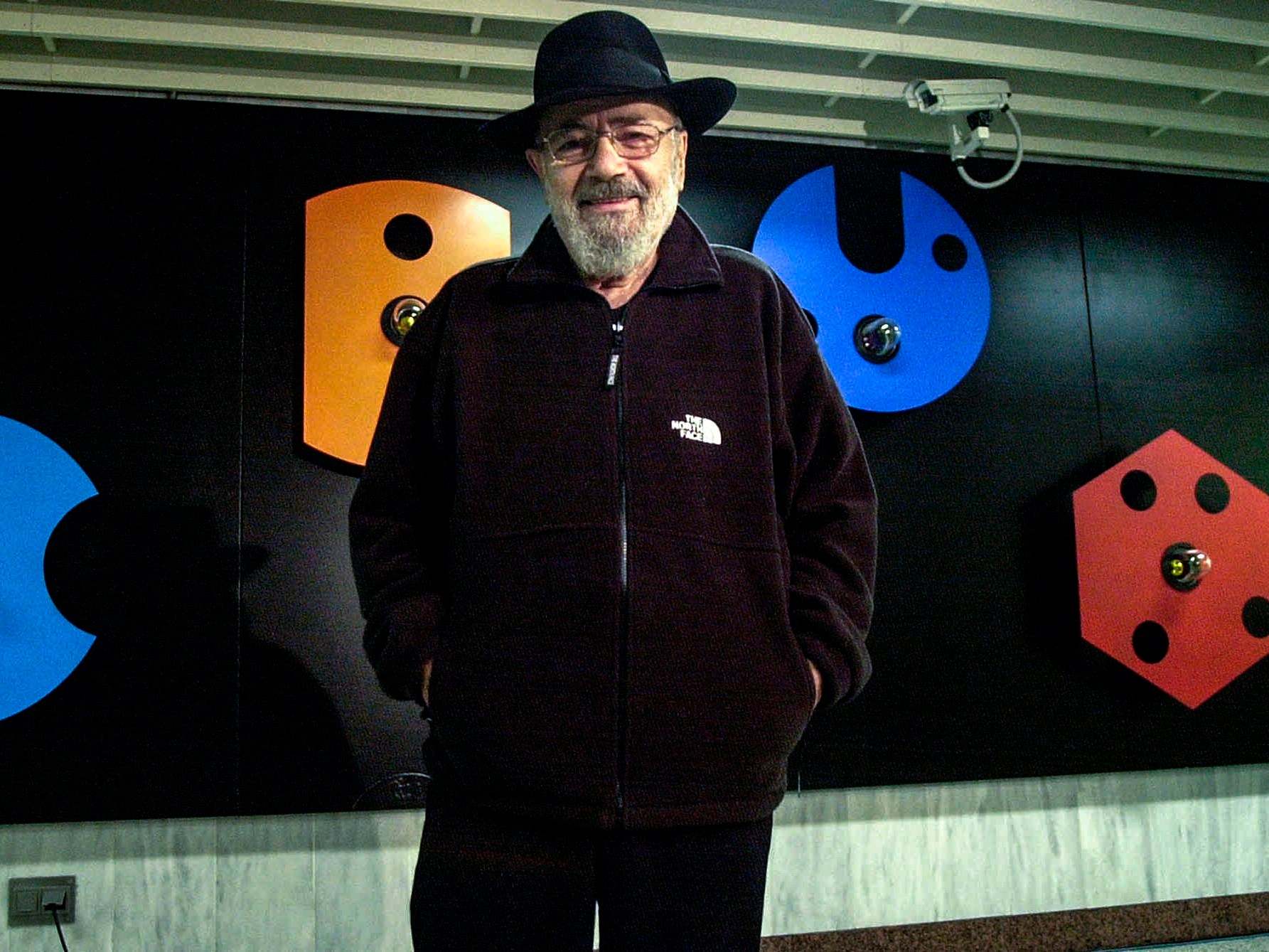Takis: Greek artist who harnessed the power of magnetism
A pioneer of kinetic art, he rose to prominence in the 1950s and is the subject of a current Tate Modern retrospective

Your support helps us to tell the story
From reproductive rights to climate change to Big Tech, The Independent is on the ground when the story is developing. Whether it's investigating the financials of Elon Musk's pro-Trump PAC or producing our latest documentary, 'The A Word', which shines a light on the American women fighting for reproductive rights, we know how important it is to parse out the facts from the messaging.
At such a critical moment in US history, we need reporters on the ground. Your donation allows us to keep sending journalists to speak to both sides of the story.
The Independent is trusted by Americans across the entire political spectrum. And unlike many other quality news outlets, we choose not to lock Americans out of our reporting and analysis with paywalls. We believe quality journalism should be available to everyone, paid for by those who can afford it.
Your support makes all the difference.An exhibition of the works of the Greek artist called Takis promised sensory experiences that for generations would have been unknown in the contemplative stillness of an art museum.
“Wheels whirl,” read a New York Times description of a Takis exhibit in 1969. “Dials quiver. And magnetised needles send electronic mating calls. There’s no lack of sound and action in a busy new show.” An innovator who thrived at the intersection of art and science, he became an exponent of the movement known as kinetic art.
Takis, who has died aged 93, was enjoying a recent burst of attention and is the subject of a retrospective exhibition at the Tate Modern in London which runs until the end of October.
A self-described “instinctive scholar”, Takis began creating sculptures in his twenties, in the aftermath of the Second World War, drawing his early inspiration from sources as diverse as Greek antiquity and the modernist masterpieces of Pablo Picasso.
He worked primarily in plaster and wrought iron before becoming fascinated by magnetism, electricity and sound, and how those unseen forces animate the physical world and how they might also breathe life into his artistic creations.
“For Takis, electromagnetism is a unifying force, which runs through all bodies, and which he celebrates in art that, in his words, ‘binds together in space, objects, metals, roaming particles of the cosmos’,” according to the database Artsy.
With his interest in motion in artwork, Takis joined the movement known as kinetic art, touched off in 1913 when the French artist Marcel Duchamp had what he called “the happy idea to fasten a bicycle wheel to a kitchen stool and watch it turn”, creating the work Bicycle Wheel.
Takis spent much of his early artistic career in Paris and London and came to the fore in the mid-1950s with a series of sculptures called Signals. He assembled them from antennae or antennae-like structures, topping the delicate rods with bits of industrial detritus. They could be imagined, according to a description of one such piece at the Tate Modern, “to be receiving and transmitting messages of far-off, cosmic events”.
Magnets and magnetism would becoming defining elements of his work for decades. So too was sound, such as the haunting noise created by a nail drawn by a magnet to a guitar string, or by a piano string blown by the wind.
Of the Tate Modern exhibition, the art critic Jonathan Jones wrote in The Guardian: “It’s hard not to use the word ‘magic’ about the art of Takis. A nail floats motionless in space. A cylinder and a ball dance jerkily with each other. Angelic music is played with no sign of a human hand. Yet none of this is the work of the supernatural, nor is Takis trying to fool anyone into thinking that it is. The force that gives his art its innocent joy is part of the fabric of the universe. Takis is like a curious child who won’t stop investigating what we jaded adults take for granted.”

The works of Takis, although better known in Europe than in the United States, were displayed at institutions including the Museum of Modern Art (Moma) in New York and the Menil Collection in Houston, as well as at the Centre Pompidou and Jeu de Paume in Paris.
Panayiotis Vassilakis was born in Athens in 1925. His family did not support his artistic ambitions, according to a biography on his foundation’s website, and yet he forged ahead, moving to Paris in the mid-1950s and joining an artistic circle that also included Jean Tinguely, another pioneer of kinetic art.
In 1960 he captured the attention of the Paris art world by using a large magnet to suspend South African writer Sinclair Beiles in midair in a dramatic performance at the city’s Iris Clert Gallery.
“Our collaboration was to show that, after all, you don’t have to go to space as we are already in space ourselves,” Takis said. “By thinking that way, we got to space quicker than [Soviet cosmonaut] Yuri Gagarin.”
In the late 1960s, Takis was recruited to the Massachusetts Institute of Technology, where during a fellowship he developed the scientific underpinnings of his artistic work. Soon after, he attracted notice when he and his friends forcibly removed one of his installations from Moma in protest against museum policies that he regarded as unfair to artists. He became an outspoken advocate for artists’ rights.

“The magnet and the attraction of love are one and the same thing,” Takis once said. “A magnet is not just an idea: it’s something very concrete and alive. This bond, this attraction established between two forms or two objects, constitutes a fantastic force of communication.”
He is survived by two children: a son from his marriage to the artist Liliane Lijn that ended in divorce, and a daughter from a relationship with the artist Sheila Fell.
Takis (Panayiotis Vassilakis), artist, born 29 October 1925, died 9 August 2019
© Washington Post
Join our commenting forum
Join thought-provoking conversations, follow other Independent readers and see their replies
Comments